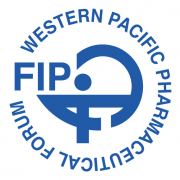WHO Launches Multi Professional Patient Safety Curriculum Guide in Manila on 19 October
Nov 16th,2011
 |
General Secretary, Reynaldo Umali, attended the meeting of the WHO Regional Committee for the Western Pacific Region on behalf of the Western Pacific Pharmaceutical Forum’ and also the ‘International meeting of International Alliance of Patient Organizations at which the WHO Multi Professional Patient Safety Curriculum Guide was launched’ |
As part of the one-day event, a workshop will take place on opportunities and obstacles to implementing the Multi-professional Patient Safety Curriculum Guide.
As patient safety teaching is relatively new for most health-care educators, the Curriculum Guide
provides, in a single publication, educational frameworks and features a variety of concepts and
methods for teaching and assessing patient safety. It is designed to be easily integrated into existing
health-care education curricula, using a flexible approach to meet individual needs, and is applicable
to different cultures and contexts. While it offers health-care schools and universities a
recommended framework and resource materials, individual adaptations to local requirements,
settings, student learning needs and resources are encouraged.
The Curriclum Guide comprises two parts. Part A is an educator’s guide designed to introduce patient safety concepts to faculty and relates to building capacity for patient safety education, programme planning and design. Part B provides an all-inclusive, ready-to-teach, topic-based
patient safety programmes that can be used as a whole, or on a per topic basis. There are 11 patient safety topics, each designed to feature a variety of ideas and methods for teaching and assessing students. Each topic supports educators to tailor material according to their own unique needs, context and resources. The topics in Part B are listed in the table below.
- Topic 1: What is patient safety?
- Topic 2: Why applying human factors is important for patient safety
- Topic 3: Understanding systems and the effect of complexity on patient care
- Topic 4: Being an effective team player
- Topic 5: Learning from errors to prevent harm
- Topic 6: Understanding and managing clinical risk
- Topic 7: Using quality-improvement methods to improve care
- Topic 8: Engaging with patients and carers
- Topic 9: Infection prevention and control
- Topic 10: Patient safety and invasive procedures
- Topic 11: Improving medication safety
The Multi-professional Patient Safety Curriculum Guide has been designed to be incorporated into
a wide range of disciplines and teaching styles. It should be adapted for local use. It is hoped that
it will complement the existing curricula and will engender a culture of patient safety practices for
the health-care professionals of the future.
For more information, please go through the Website:
WHO Launches Multi Professional Patient Safety Curriculum Guide
